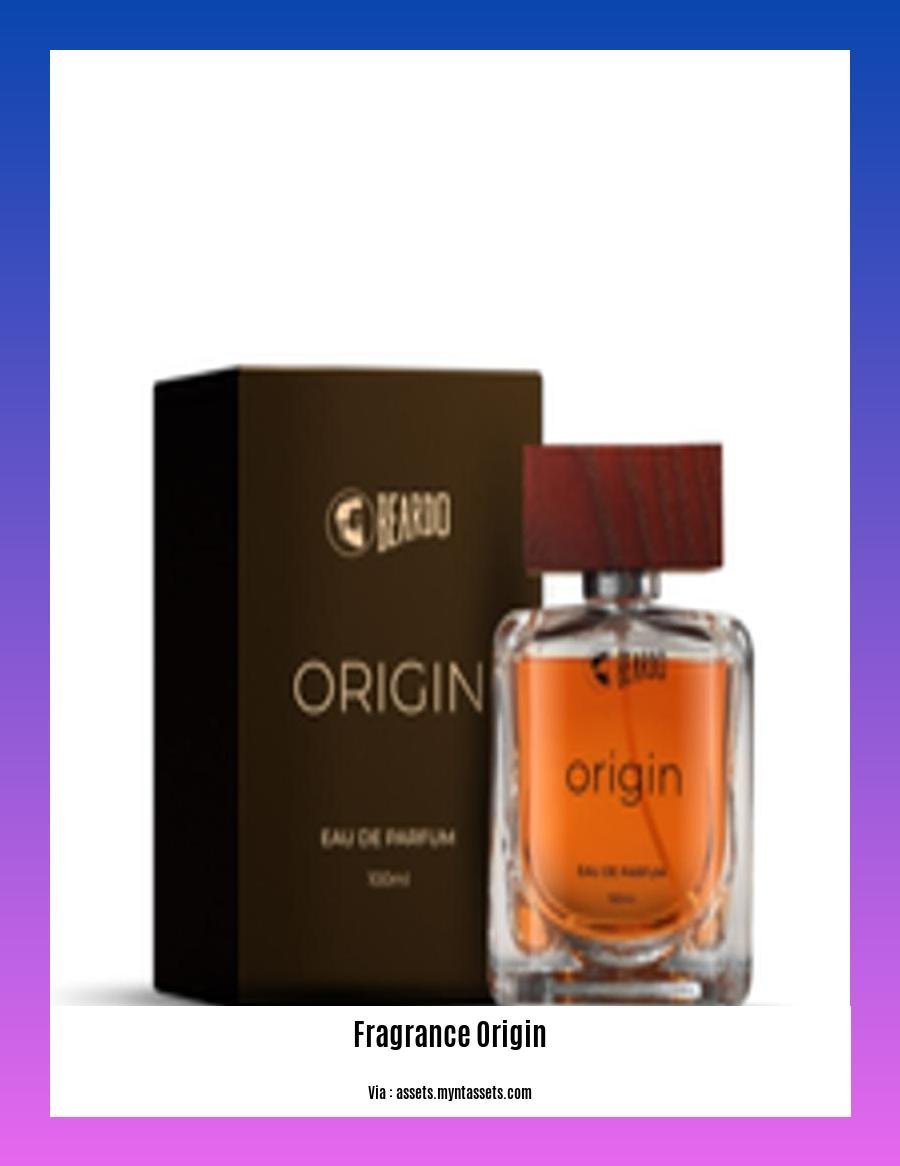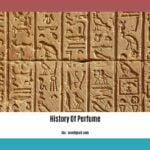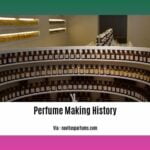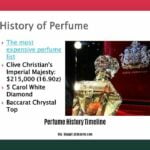Unveiling the Fragrance Origin: A Journey to the Heart of Scents.
Key Takeaways:
- Perfumery has a long history, dating back to ancient civilizations.
- The term “perfume” means “through smoke,” as the earliest fragrances were created using incense.
- Perfumery flourished in Mesopotamia, Egypt, the Indus Valley, China, and later in Europe.
- France became the perfume capital of Europe, with Grasse emerging as its epicenter.
Fragrance Origin: A Journey into the Heart of Scents
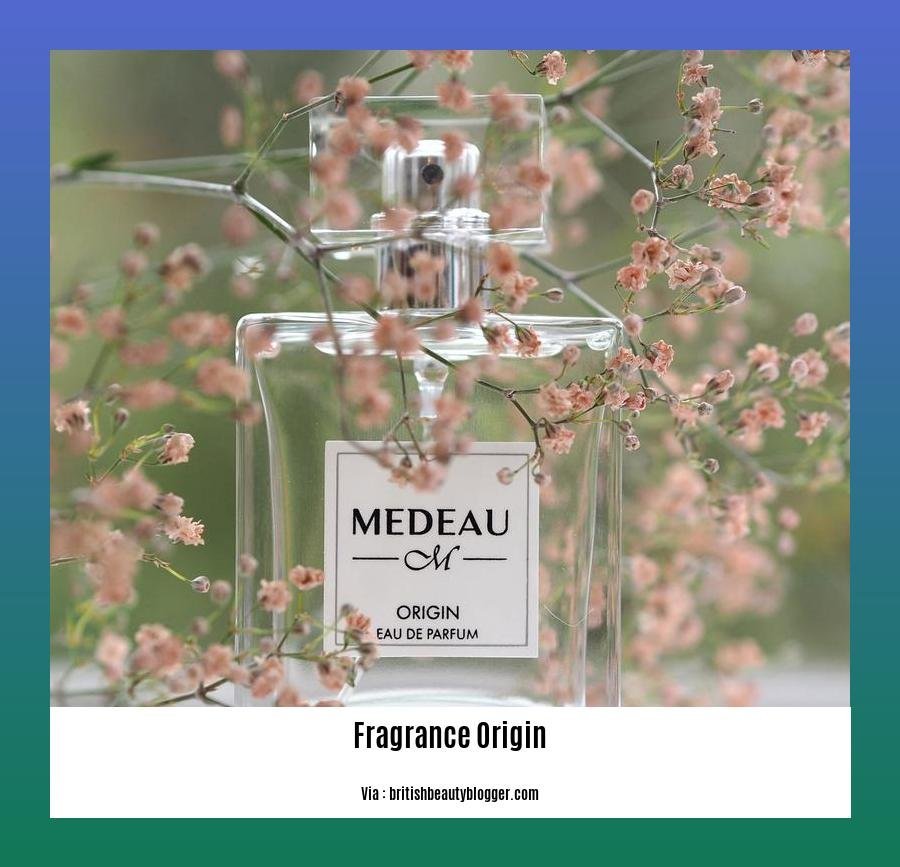
Prepare to delve into the captivating realm of fragrances as we embark on a journey to uncover their alluring origins. Our odyssey begins thousands of years ago, where the captivating allure of scents first emerged.
Dawn of Perfumery:
Like the first rays of dawn, perfumery emerged in ancient Egypt, Mesopotamia, and Cyprus. These early civilizations harnessed the power of aromatic plants, creating fragrant oils and incense that permeated their daily lives.
Etymology’s Tale:
The very word “perfume” whispers tales of its humble beginnings. Derived from the Latin phrase “per fume,” meaning “through smoke,” it hints at the ancient practice of burning incense to release enchanting aromas.
Incense: The Fragrance Pioneer:
Imagine the flickering flames of Mesopotamian temples, where incense, the primordial form of perfume, filled the air with its sacred fragrance. Around 4000 years ago, these early perfumers crafted aromatic blends that set the stage for the perfumery we know today.
Global Evolution:
The art of perfumery flourished beyond its ancient birthplace. From the Indus Valley civilization to Ancient China, each culture added its own fragrant chapter to the story. The Romans and Muslims, with their passion for bathing and aromatic oils, further refined the craft, leaving an indelible mark on the evolution of fragrances.
France’s Fragrant Throne:
As centuries passed, France emerged as the undisputed center of perfume production in Europe. The city of Grasse, nestled amidst fragrant fields of flowers, became the world capital of perfume, a testament to France’s unwavering dedication to the olfactory arts.
Do you want to know more about the fascinating journey of perfume from its ancient origins to its modern-day evolution? Dive into our comprehensive guide to the history of perfume, complete with captivating stories, timeline, and intriguing facts.
Explore the ancient art of perfume making history and uncover the captivating techniques and ingredients used by master perfumers throughout the ages.
Curious about the iconic fragrances and key moments that shaped the industry? Check out our detailed perfume history timeline, a captivating journey through the evolution of scent.
Evolution of Extraction Techniques: Unveiling the Secrets of Fragrance
The Evolution of Extraction Techniques has revolutionized the way we capture the alluring essence of nature and transform it into captivating fragrances. Join us on a captivating journey to unravel the secrets behind these aromatic masterpieces.
Historical Overview
For centuries, perfumers relied solely on natural plant-based ingredients to craft their fragrant creations. From fragrant flowers and aromatic woods to zesty fruits and exotic spices, nature’s bounty provided the raw materials for these olfactory wonders.
Advancements in Synthesis
The 19th century marked a turning point in perfumery with the development of synthetic fragrance notes. This breakthrough expanded the olfactory palette of perfumers, allowing them to create scents that were not easily obtainable from natural sources or had limited availability.
Extraction Methods
The extraction of fragrant compounds from natural sources involves a diverse range of techniques, each offering unique advantages and characteristics.
- Distillation: A heat-based process that separates volatile compounds from plant material using steam or water.
- Solvent Extraction: Dissolves fragrant compounds using a solvent like alcohol or hexane.
- Maceration: Soaking plant material in a solvent over an extended period.
- Enfleurage: A cold extraction method that uses animal fat to absorb fragrant compounds.
Types of Extracts
Depending on the extraction method and the wax content, different types of extracts are produced:
- Essential Oils: Volatile liquids containing concentrated fragrant compounds.
- Absolutes: Waxy solids or semi-solids with a higher concentration of fragrant compounds than essential oils.
- Concretes: Waxy solids that contain the entire extract, including fragrant compounds, waxes, and other plant materials.
- Butters: Solid extracts with a high wax content.
Sustainability in Extraction
In recent years, the emphasis on sustainability has driven the adoption of environmentally friendly extraction techniques. Agro-based solvents, derived from renewable plant sources, are gaining prominence as an alternative to traditional solvents.
Key Takeaways:
- The Evolution of Extraction Techniques has significantly expanded the range of fragrant compounds available to perfumers.
- Different extraction methods, such as distillation, solvent extraction, maceration, and enfleurage, offer unique advantages and characteristics.
- Extracts vary in concentration and wax content, including essential oils, absolutes, concretes, and butters.
- Sustainable extraction techniques, such as agro-based solvents, are becoming increasingly prevalent.
Most Relevant URL Source:
- Burger, P., Plainfossé, H., Chemat, F., & Ferna…, X. (2020). Extraction of Natural Fragrance Ingredients: History Overview and Future Prospects. Comprehensive Reviews in Food Science and Food Safety, 19(5), 2904-2934.
Role of Culture and Geography
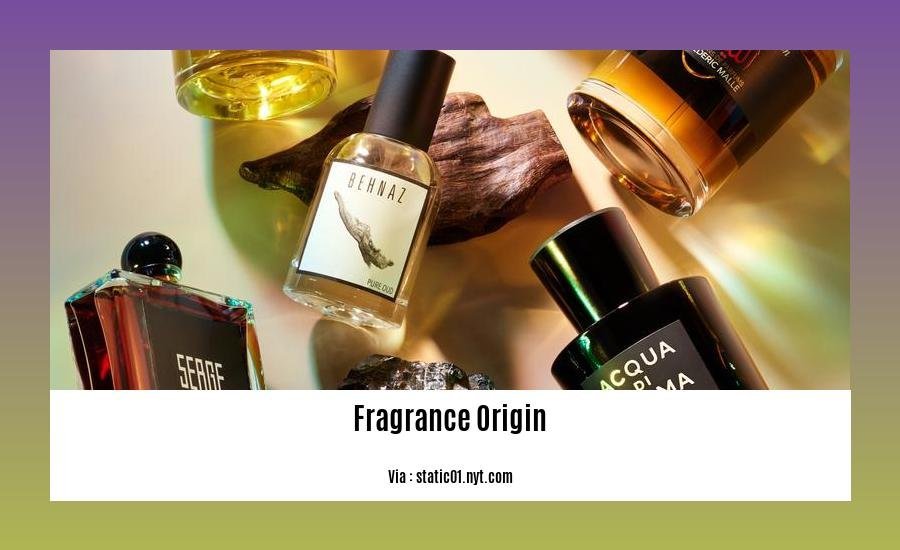
Culture and geography play a significant role in shaping the world of fragrances. Every corner of the globe holds a unique olfactory heritage and distinctive preferences when it comes to scents.
Cultural Heritage:
Perfumes are deeply embedded in human history and culture. From ancient Egypt’s fragrant oils to the incense rituals of Asian temples, scents have been an integral part of our lives. Each civilization has developed its own olfactory traditions, reflecting their values, beliefs, and way of life.
Regional Preferences:
Aromatic tastes vary widely across regions. Floral fragrances dominate in Europe, while spicy scents are prevalent in the Middle East. Asia leans towards woody and musky notes, and fresh citrus scents are popular in the Americas. These preferences are influenced by climate, cultural norms, and the availability of local ingredients.
Historical Influence:
Trade and exploration have played a pivotal role in the evolution of perfumery. The Crusaders brought Eastern fragrances to Europe, introducing exotic spices and new aromatic notes. Arabian merchants spread the art of perfumery to the West, leaving a lasting impact on the industry.
Cross-Cultural Perfumery:
Today, global perfume brands adapt their marketing and strategies to cater to diverse cultural sensibilities. They create fragrances that resonate with different regions, incorporating local ingredients and appealing to local preferences. This cross-cultural exchange has led to a vibrant and multifaceted fragrance landscape.
Key Takeaways:
- Cultural heritage has shaped the development of unique olfactory traditions around the world.
- Regional preferences for scents vary significantly based on climate, beliefs, and local resources.
- Historical influence from trade and exploration has introduced new scents and techniques to different cultures.
- Cross-cultural perfumery involves adapting fragrances to different cultural sensibilities, creating a diverse and inclusive fragrance landscape.
Most Relevant URL Source:
- The Influence of Culture on Perfume Preferences: A Global Exploration
- [Link:
Modern Fragrance Innovations
Key Takeaways:
- Botanical Embrace: Fragrances embrace nature’s essence with botanical extracts and essential oils.
- Personalized Scents: Customers craft perfumes tailored to their preferences through customization services.
- Category-Defying Fragrances: Scents transcend traditional gender boundaries, offering unisex and gender-fluid options.
- Sustainable Perfumes: Brands prioritize eco-friendliness with recycled materials, biodegradable ingredients, and sustainable extraction methods.
- Tech-Enhanced Experiences: Augmented and virtual reality provide immersive scent previews and interactive experiences.
- Unexpected Notes: Perfumes explore unconventional olfactory territories, incorporating mineral and earthy aromas.
- Fragrance Storytelling: The future of fragrance focuses on emotional connection, with scents that evoke memories and tell stories.
As the world of perfumery evolves, Modern Fragrance Innovations are shaping the way we experience and enjoy these olfactory masterpieces. From embracing natural botanicals to tailoring scents to our personal preferences, these advancements are pushing the boundaries of fragrance creation.
Botanical Embrace
Modern fragrances celebrate the beauty of nature, incorporating botanical extracts and essential oils that capture the essence of plants and flowers. These ingredients bring freshness, depth, and complexity to fragrances, evoking a sense of tranquility and connection to the natural world.
Personalized Scents
Gone are the days of one-size-fits-all fragrances. With the advent of customization services, consumers can now tailor scents to their unique preferences. From choosing specific notes to adjusting the intensity, these services empower individuals to create perfumes that truly reflect their personality and style.
Category-Defying Fragrances
Traditional gender classifications no longer confine fragrances. Modern scents break away from these boundaries, offering unisex and gender-fluid options that cater to a diverse audience. By embracing inclusivity, perfumers encourage individuals to explore fragrances without societal constraints.
Sustainable Perfumes
Sustainability plays a crucial role in modern perfumery. Brands prioritize eco-friendly practices, using recycled materials, biodegradable ingredients, and sustainable extraction methods. These efforts demonstrate a commitment to preserving the environment and ensuring the future of fragrance creation.
Tech-Enhanced Experiences
Technology enhances the fragrance experience like never before. Augmented and virtual reality provide immersive scent previews, allowing consumers to virtually try fragrances and explore their olfactory profiles. These interactive experiences make fragrance discovery more engaging and accessible.
Unexpected Notes
Modern fragrances venture beyond traditional olfactory notes, exploring unconventional territories. Mineral and earthy aromas, once considered unusual, now find their place in the perfume palette, adding depth, intrigue, and a touch of the unexpected to scents.
Fragrance Storytelling
The future of fragrance lies not just in its scent but in its ability to evoke emotions and tell stories. Perfumes become more than accessories; they become companions, capturing memories, expressing personalities, and connecting us to our innermost selves.
Citation:
Harper’s Bazaar UK. (2023). The Evolution of Fragrance: Next Generation Perfumes.
FAQ
Q1: Where did the art of perfumery originate?
A1: Perfumery originated in ancient Egypt, Mesopotamia, and Cyprus, dating back thousands of years.
Q2: What was the earliest form of perfume?
A2: Incense, created by the Mesopotamians around 4000 years ago, was the earliest form of perfume.
Q3: Which civilization played a significant role in the development of perfumery?
A3: Ancient Mesopotamia, along with the Indus Valley civilization, Ancient China, Rome, and Muslim cultures, played vital roles in developing the art of perfumery.
Q4: How did France become associated with perfume production?
A4: France emerged as a hub for perfume production in Europe, with Grasse becoming renowned as the world capital of perfume.
Q5: What is the Latin origin of the word “perfume”?
A5: The word “perfume” originates from the Latin phrase “per fume,” meaning “through smoke,” referring to the burning of incense, which was the earliest form of fragrance.
- China II Review: Delicious Food & Speedy Service - April 17, 2025
- Understand Virginia’s Flag: History & Debate - April 17, 2025
- Explore Long Island’s Map: Unique Regions & Insights - April 17, 2025
